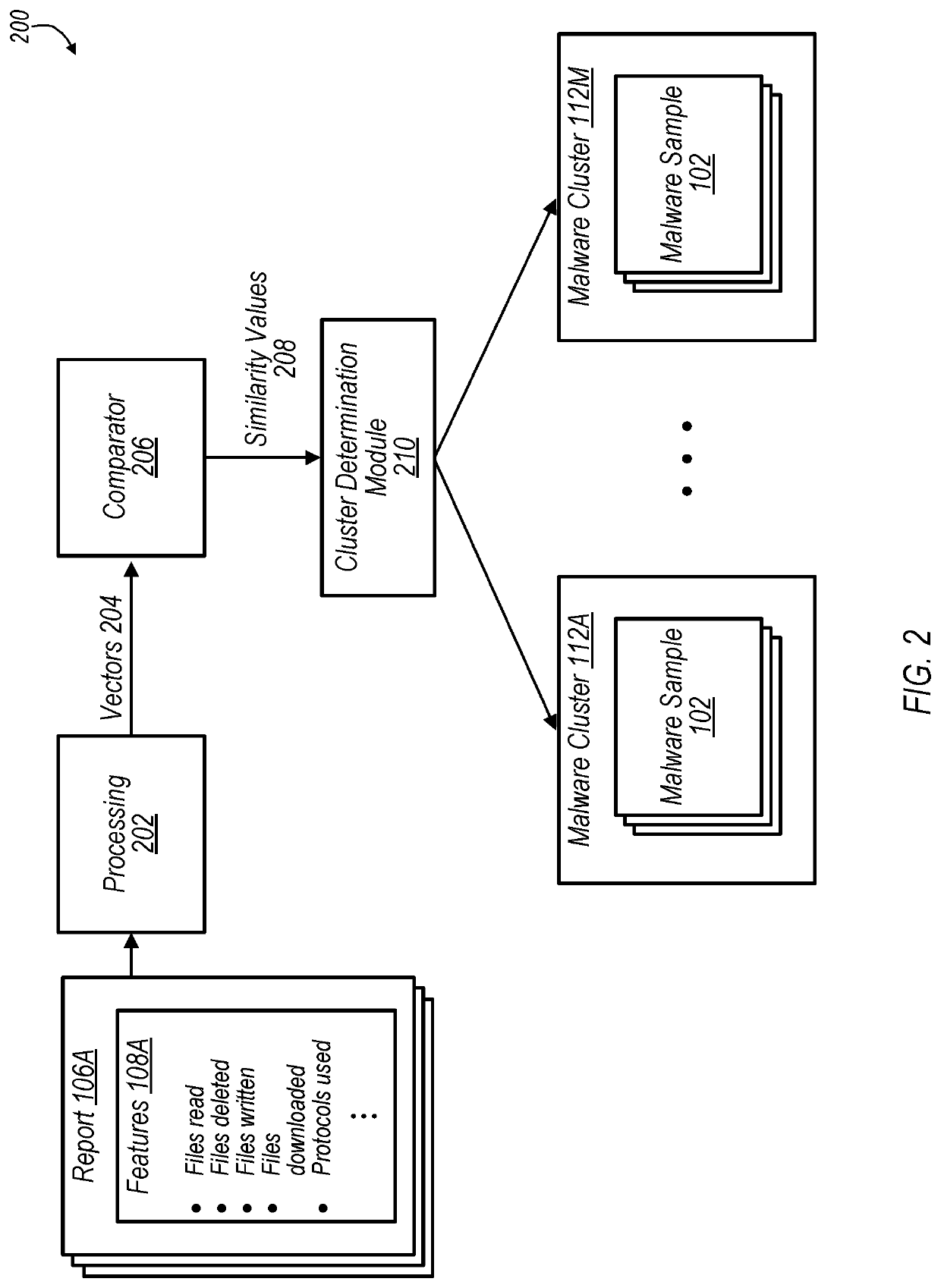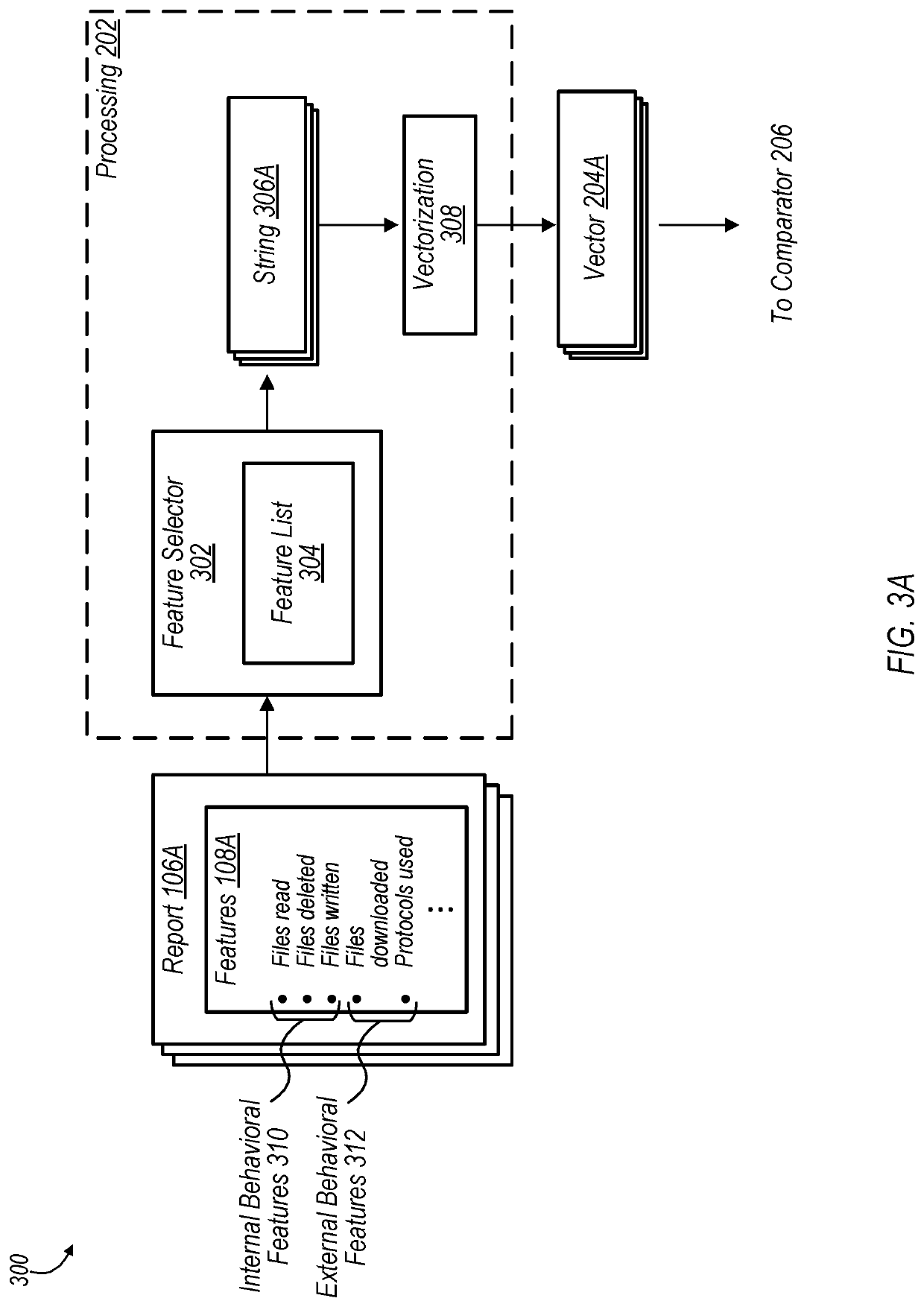Malware clustering based on function call graph similarity
a function call and similarity technology, applied in the field of data security, can solve the problems of malware propagation, affecting the performance of computing operations, and difficult for anti-malware software vendors to detect attacks and release updates in sufficient time to prevent infection and malware propagation
- Summary
- Abstract
- Description
- Claims
- Application Information
AI Technical Summary
Benefits of technology
Problems solved by technology
Method used
Image
Examples
Embodiment Construction
[0018]Grouping malware into clusters may be useful for various reasons. For example, once a population of malware samples has been clustered, useful insights may be determined from each of the clusters, such as the identification of the salient features of a cluster, determining the lineage among members of the cluster, and the derivation of one or more signatures operable to detect all, or a substantial percentage, of the members of the cluster.
[0019]FIG. 1 shows a high-level block diagram of a system 100 for grouping malware samples into clusters, according to various embodiments of the present disclosure. FIG. 1 includes malware samples 102A-102N. As used herein, the term “malware” is used according to its ordinary meaning in the art and includes any software program or portion of code operable to disable, disrupt, monitor, or otherwise interfere with or harm an infected computer system. For example, in some embodiments, malware may be operable to disable or damage computer hardw...
PUM
 Login to View More
Login to View More Abstract
Description
Claims
Application Information
 Login to View More
Login to View More - R&D
- Intellectual Property
- Life Sciences
- Materials
- Tech Scout
- Unparalleled Data Quality
- Higher Quality Content
- 60% Fewer Hallucinations
Browse by: Latest US Patents, China's latest patents, Technical Efficacy Thesaurus, Application Domain, Technology Topic, Popular Technical Reports.
© 2025 PatSnap. All rights reserved.Legal|Privacy policy|Modern Slavery Act Transparency Statement|Sitemap|About US| Contact US: help@patsnap.com



